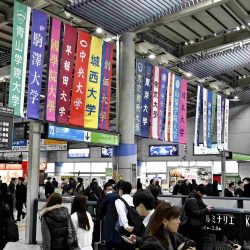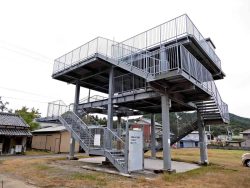Japan’s Ruling Parties Likely to Keep Majority, Says Yomiuri Survey; CDPJ on Track to Pick Up Seats

The lower house of the Diet
15:50 JST, October 17, 2024
The ruling parties appear on track to secure a majority in the upcoming House of Representatives election, while some opposition parties could gain seats, according to a Yomiuri Shimbun survey.
The survey, which was combined with reporting by Yomiuri bureaus across Japan to give a snapshot of how the election campaign’s early stages are shaping up, suggests the Liberal Democratic Party and its coalition partner, Komeito, will clinch at least half of the 465 seats in the lower house. However, the LDP is facing an uphill battle as it continues to suffer backlash over the hidden funds scandal. The main opposition Constitutional Democratic Party of Japan is poised to pick up seats, but the Japan Innovation Party has failed to gain traction and looks set to lose seats.
The LDP has fielded 266 candidates in single-seat constituencies. About 100 of them appear to be ahead of their rivals, almost 120 are locked in tight races, and more than 40 have ground to make up. The LDP won 72 seats in the proportional representation segment of the 2021 lower house election, but the party likely will fall short of that figure this time. The LDP could possibly drop below the 247 seats it held before the campaign started, and a major question for the Oct. 27 election is whether the party can secure a majority of 233 seats on its own.
Forty-four former LDP lawmakers and other party members who did not record funds in political fund reports are running in single-seat constituencies. According to the survey, about half of these candidates are trailing their rivals.
Two of the 11 Komeito candidates on the ballot in single-seat constituencies appear to be running out in front, but most of the others are neck and neck with the competition. Komeito could fail to reach the 23 proportional representation seats it won in the previous election, so it is unclear if it will hang on to its 32 seats in the lower house.
The CDPJ appears set to add about 30 seats to the 98 it held previously. About 30 of the 207 official CDPJ candidates contesting single-seat constituencies are leading in their races, especially those in the Tohoku region, the Tokyo metropolitan area and Aichi Prefecture, and at least 100 are in close races. The CDPJ looks likely to eclipse the 39 proportional representation seats it won in the previous election.
According to the survey, only nine JIP candidates are leading the pack in single-seat constituencies, in places including Osaka and Kyoto. The party lacks momentum outside the Kansai region, and there is a strong chance that it will win fewer than the 25 proportional representation seats it took in the previous election. As things stand, it is unclear whether the JIP will retain its pre-election strength of 44 seats.
The Japanese Communist Party has one candidate in a tight race for a single-seat constituency, and could possibly claim about 10 proportional representation seats. Three Democratic Party for the People candidates are in strong positions in single-seat constituencies, and the party looks set to expand on the five proportional representation seats it won in 2021.
Reiwa Shinsengumi, the Social Democratic Party, Sanseito and the Conservative Party of Japan will all likely win seats.
The survey was conducted online and by telephone with voters across Japan on Tuesday and Wednesday. In total, 263,027 respondents gave valid answers. Some respondents did not declare which political party or candidate they intended to vote for, and the race could still be shaken up.
A total of 1,344 candidates are running in the election, with 1,113 candidates entered in the 289 single-seat constituencies and 231 candidates chasing the 176 seats decided by proportional representation. The 231 figure does not include those who are also running in single-seat constituencies.
"Politics" POPULAR ARTICLE
-

Japan to Support Central Asian Logistics Route That Bypasses Russia, Plan to Be Part of Upcoming Summit in Tokyo
-

Japan to Tighten Screening of Foreigners’ Residential Status by Providing Information of Nonpayment of Taxes
-

Chinese, Russian Bombers Flew Unusual Path by Heading Toward Tokyo; Move Likely Meant to Intimidate Japan
-

Japan Plans National Database to Track Foreign Ownership of Real Estate, Land as It Weighs New Rules
-

Up to 199,000 Deaths Estimated From Mega-Tsunami; Most Recent Occurrence Took Place in 17th Century
JN ACCESS RANKING
-

Tokyo Economic Security Forum to Hold Inaugural Meeting Amid Tense Global Environment
-

Keidanren Chairman Yoshinobu Tsutsui Visits Kashiwazaki-Kariwa Nuclear Power Plant; Inspects New Emergency Safety System
-

Imports of Rare Earths from China Facing Delays, May Be Caused by Deterioration of Japan-China Relations
-

University of Tokyo Professor Discusses Japanese Economic Security in Interview Ahead of Forum
-

Japan Pulls out of Vietnam Nuclear Project, Complicating Hanoi’s Power Plans



























